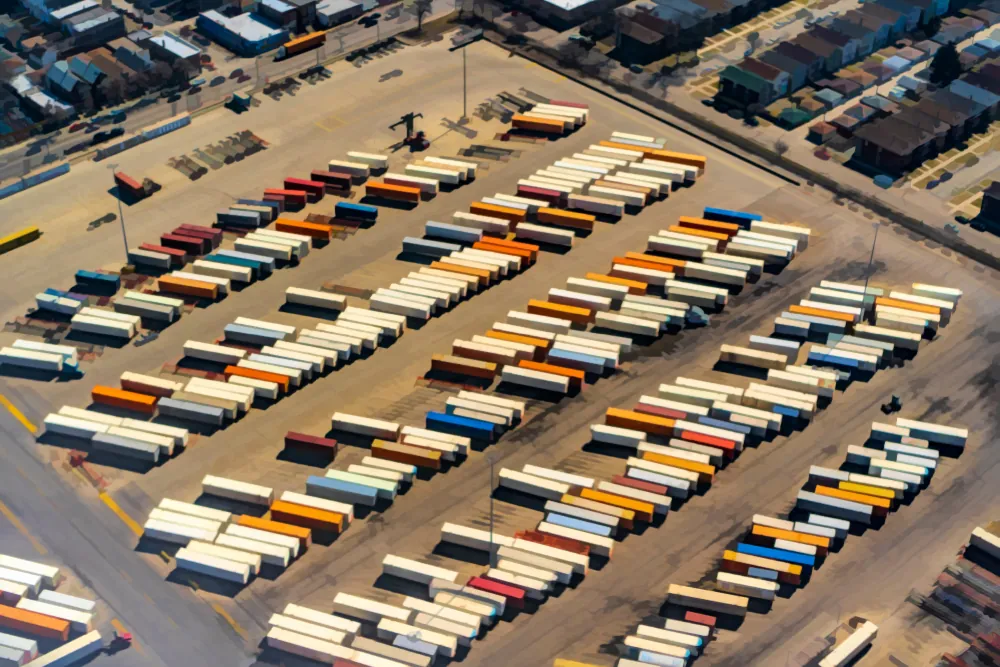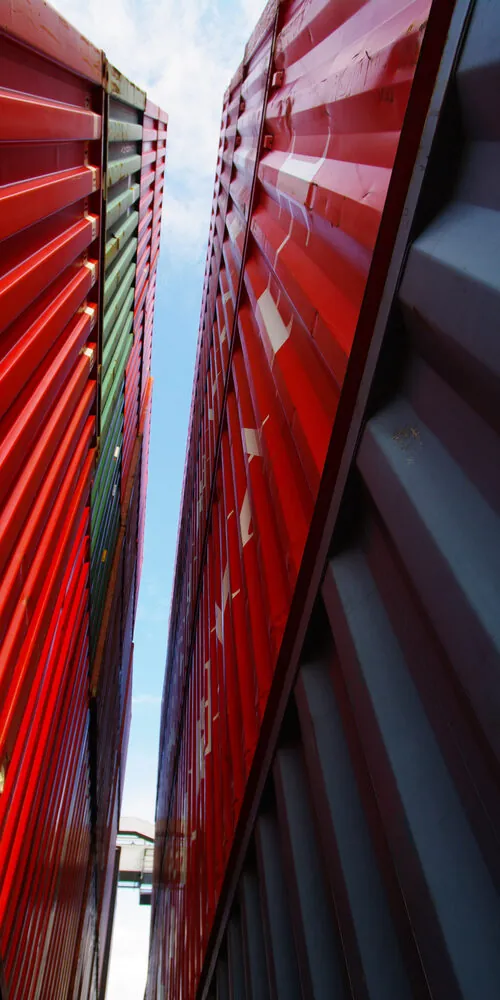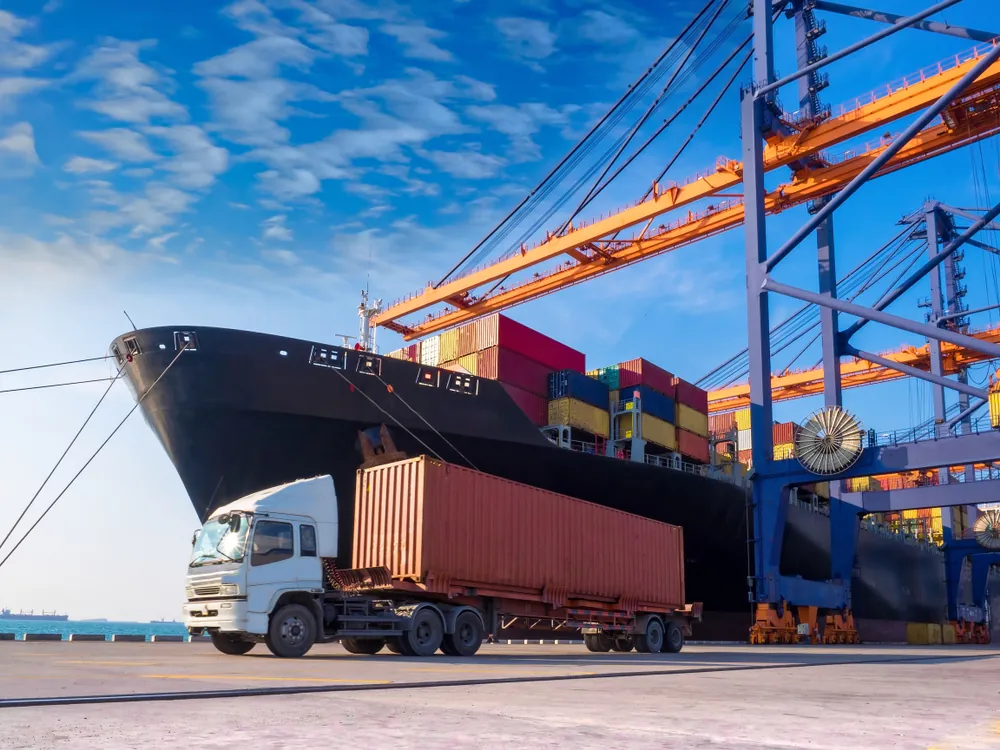
Drayage Services
In the extensive world of logistics, the term "freight drayage services" might sound complex and unfamiliar to many. However, its significance in the transportation industry is immense, playing a crucial role in the movement of goods from one point to another. Understanding the concept of freight drayage services will include breaking down the various parts of this service to provide a clear and complete overview.
What is Drayage?
At its core, freight drayage refers to the short-distance transportation of goods over land, typically within a local area, such as ports, rail yards, or distribution centers. Picture a scenario where goods arrive at a port via ship or at a rail yard via train. These goods need to be transported to their final destination, which could be a warehouse, a retail store, or another mode of transportation for further shipment. This is where freight drayage services come into play.
Thousands of businesses trust FreightCenter to move their freight faster, smarter, and cheaper! From unbeatable rates to top-notch service, our customers are raving about their shipping success.
See why they keep coming back!
Award-Winning Service, Trusted by Shippers Everywhere!
- 2021, 2017 & 2016 Food Logistics’ Top Green Providers
- 2021 & 2018 Supply & Demand Chain Executives’ Pros to Know: Matthew Brosious
- 2020 & 2019 Top Food Logistics’ 3PL & Cold Storage Provider Award
- 2020 & 2019 Business Observer’s Top 500 Companies on the Gulf Coast
- 2020 & 2017 SmartWay® Transport Partner
- 2020 & 2017 Food Logistics’ Champions: Rock Stars of the Supply Chain
- 2020 Best of Palm Harbor Awards for Local Businesses
- 2017 Green Supply Chain Award from Supply & Demand Chain Executive
- 2017 Tampa Bay Business Journal Heroes at Work
- 2016, 2015, & 2012 Food Logistics Top 100 Software and Technology Providers
- 2013 Tampa Bay Business 100 by Tampa Bay Business Journal
- 2013 Top 100 Great Supply Chain Partners by SupplyChainBrain
- 2012 TIA Samaritan Award Honorable Mention
- 2012, 2011 & 2010 TBBJ Fast 50 Recipient
- 2013, 2011, & 2010 Diversity Business Top Businesses

Why Choose FreightCenter for Freight Drayage Services
FreightCenter stands out as the top choice for businesses regarding drayage services.
- Industry Experience: With years of experience, we know the ins and outs of freight transportation, ensuring you get the best service possible.
- Wide Network of Carriers: Our extensive network of carriers means you have plenty of options for your drayage needs, whether it’s port, rail, or airport drayage.
- Easy-to-Use Technology: Our online platform makes booking and tracking shipments a breeze, giving you complete control and visibility every step of the way.
- Great Prices: We negotiate competitive rates with our carriers, so you get top-quality service without breaking the bank.
- Exceptional Customer Support: Our dedicated team is available 24/7 to help with any questions or concerns, providing personalized assistance whenever needed.
- Reliability: You can trust us to handle your freight carefully and ensure it arrives safely and on time.
- Flexibility: We offer flexible solutions tailored to your specific needs, so you get exactly what you need when you need it.
What are Drayage Services?
Freight drayage services encompass various types tailored to meet specific transportation needs. Understanding these different types can help businesses make informed decisions when selecting a provider. The Intermodal Association of America (IANA) details 6 different types of drayage:
- Pier Drayage: Pier drayage involves the movement of containers or goods within port facilities. This could include transporting containers from ships to storage yards or picking up a load at a rail hub and delivering it to a pier to be loaded onto a ship.
- Intra-Carrier Drayage: One container being moved a short distance between different freight terminals owned by the same company.
- Inter-Carrier Drayage: Two or more carriers different carriers moving cargo or one carrier using two or more different modes of transportation.
- Expedited Drayage: When cargo is needed urgently, an over-the-road carrier will move it fast via team drivers or other methods.
- Door to Door Drayage: Cargo is moved from a port or warehouse to the final destination or end consumer’s location.
- Shuttle Drayage: When a shipping hub’s docks are full. Shuttle drayage will move containers to another location for temporary storage.
Key Components of Freight Drayage Services:
- Local Transportation: Freight drayage primarily involves cargo movement over short distances, usually within the same metropolitan area or region. It’s like the last-mile delivery in a broader logistics chain, ensuring that goods reach their destination promptly and efficiently.
- Intermodal Connectivity: In many cases, freight involves the transfer of goods between different modes of transportation, such as ships, trains, and trucks. For example, a container arriving at a port might need to be transported to a rail yard for onward shipment via train.
Freight drayage services facilitate this seamless transition between modes, optimizing the supply chain.
- Container Handling: Containers are universal in freight transportation, serving as standardized units for storing and transporting goods. Freight drayage providers are responsible for loading, unloading, and transporting these containers, often utilizing specialized equipment such as chassis and forklifts to ensure safe handling.
- Time-sensitive Deliveries: Efficiency is important in any freight operations, especially when dealing with time-sensitive shipments. Whether perishable goods need immediate transport or just-in-time inventory replenishment for manufacturing facilities, services play a vital role in meeting delivery deadlines.
- Regulatory Compliance: Like any aspect of transportation, freight is subject to various regulations and compliance standards. This includes adherence to safety protocols, environmental regulations, and licensing requirements.
Reputable drayage providers fully comply with these regulations to mitigate risks and maintain operational integrity.
Factors Influencing Freight Drayage Costs
Understanding the factors influencing freight costs is essential for businesses to manage transportation expenses effectively. Several key factors can impact drayage pricing, including:
- Distance: The distance traveled plays a significant role in determining costs. Longer distances typically result in higher transportation expenses due to fuel consumption, vehicle wear and tear, and driver labor.
- Freight Volume: The volume of freight being transported can affect costs, as larger shipments may require additional handling or specialized equipment. Consolidating multiple shipments or utilizing total truckload capacity can help optimize costs.
- Equipment Requirements: Specialized equipment, such as chassis or refrigerated trailers, may be required for certain types of cargo. The availability and cost of equipment can impact pricing, especially for oversized or high-value shipments.
- Accessorial Charges: Additional services or charges, such as detention fees, wait time, or accessorial services, can contribute to drayage costs. Clarifying any potential accessorial charges upfront is essential to avoid unexpected expenses.
- Fuel Prices: Fluctuations in fuel prices can affect costs, as fuel is a significant expense for transportation providers. Businesses should monitor fuel prices and consider fuel surcharges when evaluating drayage quotes.
- Seasonal Demand: Seasonal fluctuations in demand can impact costs, especially during peak shipping seasons or holidays. Increased demand may lead to capacity constraints and higher rates, while slower periods may offer opportunities for cost savings.
- Regulatory Compliance: Compliance with regulatory requirements, such as environmental standards or safety regulations, can influence costs. Providers may incur additional expenses to meet compliance obligations, which can be reflected in pricing.
Considering these factors and working closely with drayage providers, businesses can develop strategies to optimize transportation costs while ensuring efficient and reliable freight movement.
Effective cost management is essential for maintaining competitiveness and maximizing profitability in today’s dynamic logistics landscape.
By optimizing the movement of goods over short distances, freight drayage helps reduce transportation costs and overall supply chain expenses. Consolidating shipments and maximizing vehicle capacity contribute to cost savings for businesses.
With their localized focus and specialized expertise, freight drayage providers streamline the logistics process, minimizing delays and optimizing delivery schedules. This efficiency translates to improved customer satisfaction and operational performance.
Efficient freight drayage operations contribute to reduced carbon emissions and environmental impact by minimizing unnecessary mileage and fuel consumption. This aligns with broader sustainability goals and corporate responsibility initiatives.
Drayage services facilitate seamless connectivity between different modes of transportation, such as ships, trains, trucks, and aircraft. By bridging the gap between various transportation networks, drayage providers enable efficient intermodal transportation, maximizing the benefits of multi-modal logistics solutions and supporting global trade and commerce.

Frequently Asked Questions About Drayage
Q. What is drayage in trucking?
In trucking, “drayage” refers to the short-distance transport of goods, often involving the movement of shipping containers from ports, rail yards, or other transportation hubs to nearby warehouses or distribution centers. It serves as the critical “first mile” or “last mile” connection in the supply chain, bridging different modes of transportation, such as ships, trains, and trucks. Drayage is a key component of intermodal shipping, typically involving short hauls within a local area to ensure seamless transitions between long-distance transport and final delivery.
Q. What is an example of a drayage?
An example of drayage is transporting imported goods by truck from a port to a nearby warehouse for temporary storage until customer orders are placed. This short-distance freight movement is a critical link in the supply chain, ensuring efficient transition from ship to final delivery preparation.
Q. Is drayage and trucking the same?
Drayage and trucking are related but not the same. Drayage specifically refers to short-distance transportation of containerized freight, especially in and out of ports or intermodal terminals. In contrast, general trucking encompasses long-distance transport over various routes. Both are crucial to the logistics industry but serve different roles in the supply chain.
Q. What is the difference between carriage and drayage?
The difference between carriage and drayage lies in their roles in the transport process. Drayage involves short-distance movement of freight between ports, rail yards, or distribution centers. In contrast, carriage refers to the final delivery stage, transporting goods directly to the customer’s location locally. These steps ensure efficient logistics and freight operations.
Q. What's the difference between drayage and intermodal?
Intermodal and drayage are closely related but serve distinct roles in the transportation process:
- Intermodal shipping involves the movement of goods using multiple modes of transportation—such as sea, rail, and truck—without handling the cargo itself when switching between these modes. It is ideal for covering long distances efficiently, leveraging the strengths of each transport mode to reduce costs and environmental impact.
- Drayage, on the other hand, refers specifically to the short-distance transport of goods by truck. It plays a critical role
Advantages of using FreightCenter as your drayage shipper

Efficiency
Our easy-to-use online platform streamlines the drayage process, saving you time and effort.

Cost Savings
Leveraging our carrier network and negotiating competitive rates ensures significant cost savings for your drayage shipments.

Reliability
Partnering with experienced carriers and offering 24/7 customer support ensures your drayage shipments arrive safely and on time, providing peace of mind throughout the shipping process.







